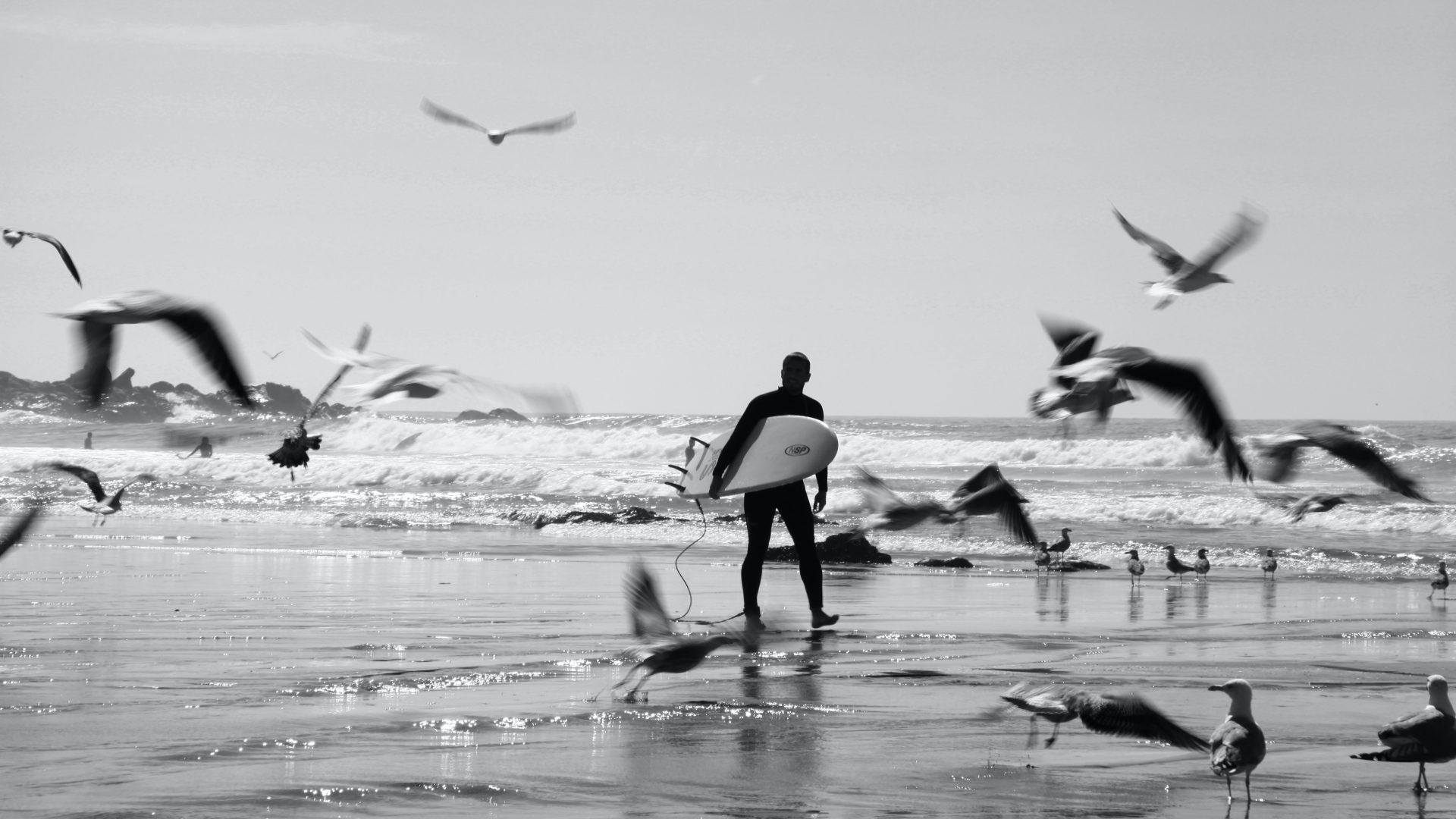Surf Leash History From 1970's

As surfers we all now use a surf leash on our board, but what do we know our surf leash history?
Who invented it and when was the surf leash first used?
Let’s get into it!
Surf Leash History
Surf leash history began in the 1970's where Pat O'Neill invented the first surfing leash, revolutionising surfing by preventing runaway boards and enhancing surfer safety.
Surf Leash Origin
The surf leash history originated in response to the challenges surfers faced in the 1970s while their boards were getting lost!
Before its introduction, surfers had to swim to retrieve their boards when they fell, posing inconveniences and dangers to both surfers and others in the water. Now surfers are able to purchase the best surfboard leashes possible to present this!
The leash's inventor, Pat O'Neill, son of wetsuit pioneer Jack O'Neill, designed the first prototypes using surgical cord and a suction cup.
Despite facing initial controversy and disqualification from a surfing competition, the leash quickly gained popularity, becoming an essential safety tool for surfers around the world.
The origin of the surf leash marks a significant milestone in surf culture and surf leash history, transforming the sport by enhancing safety and convenience for surfers of all levels.
Surf Leash History Meaning To Surfers
The surf leash has become an integral aspect of surfing, profoundly impacting the sport's dynamics and accessibility.
Its introduction, alongside innovations like mass-produced polyurethane surfboards and neoprene wetsuits, stands as one of surfing's most significant advancements.
The leash has played a pivotal role in keeping surfers in the water, enhancing safety, and minimising the need for exhaustive swims to retrieve runaway boards.
Over the past half-century, nothing has contributed more to keeping surfers of all skill levels confidently riding the waves than the surf leash. Beyond its practical implications, the surf leash reflects a cultural shift, shedding any dismissive stigma and encouraging surfers to "practise safe surfing," making it a vital tool for wave lovers worldwide.
Why The Surf Leash is Used
The surf leash serves a crucial purpose in surfing by preventing surfboards from being swept away by waves. Before the leash's advent, surfers had to endure the inconvenience of swimming to retrieve their boards after a fall, posing risks to themselves and others in the water.
The leash ensures that if a surfer falls while riding a wave, the board stays within reach, allowing for a quick recovery and a swift return to the take-off zone.
Its primary function is to enhance safety and convenience, making it an indispensable tool for surfers of all levels.
Surf Leash Structure
Modern surf leashes are intricately designed with key components to ensure effectiveness and durability fitted around a surfers back foot.
The leash typically consists of a cuff, swivel, cord, and rail saver. The cuff features a double wrap-around Velcro design, providing a secure attachment to the surfer's ankle. The swivel allows the cuff to spin and twist without tangling the cord, reducing strain.
The cord, often made of high-quality polyurethane, comes in varying thicknesses, balancing strength and drag in the water. Lastly, the rail saver is designed to protect the surfboard's rail and ensures a secure connection.
Together, these structural elements create a reliable and efficient surf leash that meets the demands of modern surfing. It is recommend to replace the surfboard leash every year so be sure to check for damage!
Surf Leash Current Use
In contemporary surfing, the surf leash remains an essential and widely adopted piece of equipment founded in surf leash history. Shortboarders consider it mandatory for its role in preventing runaway boards and ensuring a quick recovery after a fall.
Despite its widespread acceptance among shortboard enthusiasts, longboarders sometimes resist using leashes, claiming it interferes with their ability to walk up and down the board.
In response, some longboarders opt for calf leashes, a modified alternative that wraps around the calf instead of the ankle, minimising interference while maintaining safety.
However, debates persist, particularly in crowded surf spots with larger waves, where the safety of others is prioritised over the freedom of not wearing a leash. The current use of surf leashes reflects a balance between safety, personal preference, and the evolving dynamics of surfing styles.
Summing It Up: What To Do Now
Now you understand surf leash history! Make sure you have the right leash for your surfboard as this is important!
If your interested in learning more about surfing discover our many guides that will inform you on your surfing journey. Don't forget to follow us on Facebook & Instagram to stay informed on our amazing surf shots and stories shared from surf creators around the world!


